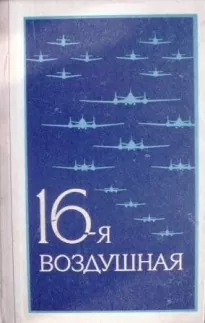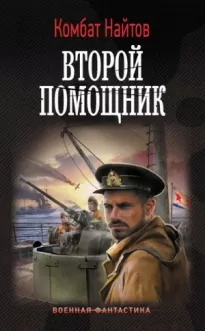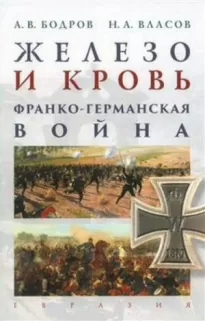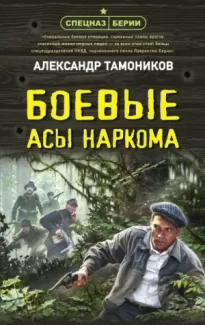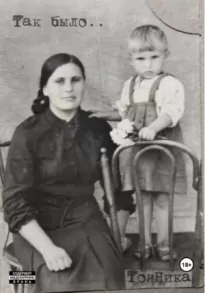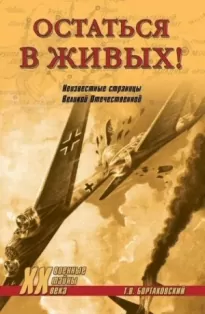Крепость тёмная и суровая: советский тыл в годы Второй мировой войны
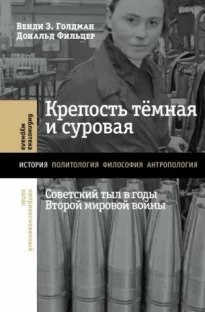
- Автор: Дональд Фильцер
- Жанр: Историческая проза / Военная проза / История России и СССР / Для старшего школьного возраста 16+
- Дата выхода: 2023
Читать книгу "Крепость тёмная и суровая: советский тыл в годы Второй мировой войны"
Goldman W. Z., Filtzer D. (eds.). Hunger and War: Food Provisioning in the Soviet Union during World War II. Bloomington: Indiana University Press, 2015.
Gorinov M. M. Muscovites’ Moods, 22 June 1941 to May 1942 // Thurston R. W., Bonwetsch B. (eds.). The People’s War. P. 108–136.
Gregory P. R. The Political Economy of Stalinism: Evidence from the Soviet Secret Archives. Cambridge: Cambridge University Press, 2004.
Grossman A. A Question of Silence: The Rape of German Women by Occupation Soldiers // October. 1995. Vol. 72. P. 42–63.
Grossman V. A Writer at War: A Soviet Journalist with the Red Army, 1941–1945 / ed. and trans. A. Beevor, L. Vinogradova. New York: Vintage Books, 2007.
Hagemann K., Schuler-Springorum S. (eds.). Home/Front: The Military, War and Gender in Twentieth-Century Germany. Oxford: Berg, 2002.
Hagenloh P. Stalin’s Police: Public Order and Mass Repression in the USSR, 1926–1941. Baltimore: Johns Hopkins University Press, 2009.
Harrison M. Accounting for War: Soviet Production, Employment, and the Defence Burden, 1940–1945. Cambridge: Cambridge University Press, 1996.
Harrison M. Industrial Mobilisation for World War II: A German Comparison // Harrison M., Barber J. (eds.). The Soviet Defence Industry Complex from Stalin to Khrushchev. Basingstoke, London: Macmillan Press, 2000. P. 99–117.
Harrison M. Industry and Economy // Stone D. (ed.). The Soviet Union at War. P. 15–44.
Harrison M. Resource Mobilization for World War II: The USA, UK, USSR, and Germany, 1938–1945 // Economic History Review. 1988. Vol. 41. № 2. P. 171–192. URL: http://www2.warwick.ac.uk/fac/soc/economics/staff/mharrison/public/ehr88postprint.pdf (дата обращения: 02.05.2022).
Harrison M. Soviet Planning in Peace and War 1938–1945. Cambridge: Cambridge University Press, 1985.
Harrison M. The USSR and Total War: Why Didn’t the Soviet Economy Collapse in 1942? // Chickering R., Forster S., Greiner B. (eds.). A World at Total War: Global Conflict and the Politics of Destruction, 1937–1945. Cambridge: Cambridge University Press, 2010. P. 137–156.
Heinzen J. The Art of the Bribe: Corruption under Stalin, 1943–1953. New Haven; London: Yale University Press, 2016.
Hellbeck J. Stalingrad: The City That Defeated the Third Reich. New York: Public Affairs, 2015.
Hessler J. A Social History of Soviet Trade: Trade Policy, Retail Practices, and Consumption, 1917–1953. Princeton: Princeton University Press, 2004.
Hill A. The Red Army and the Second World War. Cambridge: Cambridge University Press, 2017.
Holmes L. Stalin’s World War II Evacuations: Triumph and Troubles in Kirov. Lawrence: University Press of Kansas, 2017.
Holmes L. War, Evacuation, and the Exercise of Power: The Center, Periphery, and Kirov’s Pedagogical Institute, 1941–1952. Lanham, Md.: Lexington Books, 2012.
Ironside K. Between Fiscal, Ideological, and Social Dilemmas: The Soviet «Bachelor Tax» and Post-War Tax Reform, 1941–1962 // Europe – Asia Studies. 2017. Vol. 69. № 6. P. 855–878.
Ironside K. Rubles for Victory: The Social Dynamics of State Fundraising on the Soviet Home Front // Kritika: Explorations in Russian and Eurasian History. 2014. Vol. 15. № 4. P. 799–828.
Ironside K. Stalin’s Doctrine of Price Reductions during the Second World War and Postwar Reconstruction // Slavic Review. 2016. Vol. 75. № 3. P. 655–677.
Jones J. W. Everyday Life and the «Reconstruction» of Soviet Russia during and after the Great Patriotic War, 1943–1948. Bloomington: Slavica Publishers, 2008.
Kay A. J. Exploitation, Resettlement, Mass Murder: Political and Economic Planning for German Occupation Policy in the Soviet Union, 1940–1941. New York: Berghahn Books, 2006.
Kay A. J. Germany’s Staatssekretare, Mass Starvation and the Meeting of 2 May 1941 // Journal of Contemporary History. 2006. Vol. 41. № 4. P. 685–700.
Kay A. J. The Purpose of the Russian Campaign Is the Decimation of the Slavic Population by Thirty Million: The Radicalization of German Food Policy in Early 1941 // Kay A. J., Rutherford J., Stahel D. (eds.). Nazi Policy on the Eastern Front, 1941. P. 101–129.
Kay A. J., Rutherford J., Stahel D. (eds.). Nazi Policy on the Eastern Front, 1941: Total War, Genocide, and Radicalization. Rochester, N. Y.: University of Rochester Press, 2012.
Keys A., Brožek J., Henschel A., Mickelsen O., Taylor H. L. et al. The Biology of Human Starvation. Minneapolis: University of Minnesota Press, 1950.
Khlevniuk O. The Gulag and Non-Gulag as One Interrelated Whole // Kritika: Explorations in Russian and Eurasian History. 2015. Vol. 16. № 3. P. 479–498.
Khlevniuk O. V. Deserters from the Labor Front: The Limits of Coercion in the Soviet War Economy // Kritika: Explorations in Eurasian History. 2019. Vol. 20. № 3. P. 481–504.
Khlevnyuk O., Davies R. W. The End of Rationing in the Soviet Union, 1934–1935 // Europe – Asia Studies. 1999. Vol. 5. № 4. P. 557–609.
Kirschenbaum L. «Our City, Our Hearths, Our Families»: Local Loyalties and Private Life in Soviet World War II Propaganda // Slavic Review. 2000. Vol. 59. № 4. P. 825–847.
Koonz C. Mothers in the Fatherland: Women, the Family, and Nazi Politics. New York: St. Martin’s Press, 1988.
Kozhina E. Through the Burning Steppe: A Memoir of Wartime Russia, 1942–1943. New York: Riverhead Books, 2002.
Kragh M. Soviet Labour Law during the Second World War // War in History. 2011. Vol. 18. № 4. P. 531–546.
Kragh M. Stalinist Labour Coercion during World War II: An Economic Approach // Europe – Asia Studies. 2011. Vol. 63. № 7. P. 1253–1273.
Krylova A. Soviet Women in Combat: A History of Violence on the Eastern Front. New York: Cambridge University Press, 2011.
Kucherenko O. Soviet Street Children and the Second World War: Welfare and Social Control under Stalin. London: Bloomsbury, 2016.
Leder M. My Life in Stalinist Russia: An American Woman Looks Back. Bloomington: Indiana University Press, 2001.
Levesque J. A Peasant Ordeal: The Soviet Countryside // Stone D. (ed.). The Soviet Union at War. P. 182–214.
Lieberman S. R. Crisis Management in the USSR: The Wartime System of Administration and Control // Linz S. (ed.). The Impact of World War II on the Soviet Union. Totowa, N. J.: Rowman & Allanheld, 1985. P. 59–76.
Lih L. Bread and Authority in Russia, 1914–1921. Berkeley: University of California Press, 1990.
Linder F. E., Grove R. D. Vital Statistics Rates in the United States, 1900–1940. Washington, D. C.: United States Government Printing Office, 1947.
Lower W. Nazi Empire-Building and the Holocaust in Ukraine. Chapel Hill: University of North Carolina Press, 2005.
Manley R. Nutritional Dystrophy: The Science and Semantics of Starvation in World War II // Goldman W. Z., Filtzer D. (eds.). Hunger and War. P. 206–264.
Manley R. To the Tashkent Station: Evacuation and Survival in the Soviet Union at War. Ithaca: Cornell University Press, 2009.
Markwick R. Stalinism at War // Kritika: Explorations in Russian and Eurasian History. 2002. Vol. 3. № 3. P. 509–520.
Markwick R., Fieseler B. The Rear Area in the Great Patriotic War: Red Army Men’s Wives and Families Struggle for Survival in Yaroslavl // Былые годы. 2013. Т. 28 (2).
Markwick R. D., Cardona E. C. Soviet Women on the Front Line in the Second World War. New York: Palgrave Macmillan, 2012.
Mawdsley E. Thunder in the East: The Nazi – Soviet War 1941–1945. London: Bloomsbury, 2016.
McBride J. Peasants into Perpetrators: The OUN-UPA and the Ethnic Cleansing of Volhynia, 1943–1944 // Slavic Review. 2016. Vol. 75. № 3. P. 630–654.
McLoughlin B., McDermott K. (eds.). Stalin’s Terror: High Politics and Mass Repression in the Soviet Union. Basingstoke: Palgrave, 2003.
McReynolds L. Dateline Stalingrad: Newspaper Correspondents at the Front // Stites R. (ed.). Culture and Entertainment in Wartime Russia. P. 28–43.
Merridale C. Ivan’s War: The Red Army, 1939–1945. London: Faber & Faber, 2005.
Michman D. The Emergence of German Ghettos during the Holocaust. New York: Cambridge University Press, 2011.
Moskoff W. The Bread of Affliction: The Food Supply in the USSR during World War II. Cambridge: Cambridge University Press, 1990.
Murphy D. What Stalin Knew: The Enigma of Barbarossa. New Haven: Yale University Press, 2005.
Naimark N. The Russians in Germany: A History of the Soviet Zone of Occupation. Cambridge, Mass.: Harvard University Press, 1997.
Nakachi M. Population, Politics, and Reproduction: Late Stalinism and Its Legacy // Fürst J. (ed.). Late Stalinist Russia: Society between Reconstruction and Reinvention. London: Routledge, 2006. P. 23–45.
Nove A. An Economic History of the Soviet Union. Harmondsworth: Penguin, 1972.
Osokina E. Our Daily Bread: Socialist Distribution and the Art of Survival in Stalin’s Russia, 1927–1941. Armonk, N. Y.: M. E. Sharpe, 2001.
Overy R. Why the Allies Won. New York; London: W. W. Norton and Co., 1995.
Peri A. Queues, Canteens and the Politics of Location in Diaries of the Leningrad Blockade, 1941–1942 // Goldman W. Z., Filtzer D. (eds.). Hunger and War. P. 158–205.
Peri A. The War Within: Diaries from the Siege of Leningrad. Cambridge, Mass.: Harvard University Press, 2017.
Prasad A. S. Zinc Deficiency Has Been Known of for 40 Years But Ignored by Global Health Organizations // British Medical Journal. 22 February 2003. Vol. 326. P. 409–410. URL: http://www.ncbi.nlm.nih.gov/pmc/articles/PMC1125304/ (дата обращения: 02.05.2022).
Qualls K. D. From Ruins to Reconstruction: Urban Identity in Soviet Sevastopol after World War II. Ithaca: Cornell University Press, 2009.
Randall A. The Soviet Dream World of Retail Trade and Consumption in the 1930s. Basingstoke: Palgrave Macmillan, 2008.
Ransel D. Village Mothers: Three Generations of Change in Russia and Tataria. Bloomington: Indiana University Press, 2005.
Redlich S. War, Holocaust, and Stalinism: A Documented History of the Jewish Anti-Fascist Committee. New York: Routledge, 2016.
Reese R. R. The Red Army and the Great Purges // Arch Getty J., Manning R. (eds.). Stalinist Terror: New Perspectives. Cambridge: Cambridge University Press, 1993. P. 198–214.
Reese R. R. Why Stalin’s Soldiers Fought: The Red Army’s Military Effectiveness in World War II. Lawrence: University Press of Kansas, 2011.
Reid A. Leningrad: The Epic Siege of World War II. New York: Walker Books, 2011.
Ries N. Potato Ontology: Surviving Postsocialism in Russia // Cultural Anthropology. 2009. Vol. 24. № 2. P. 181–212.
Römer F. The Wehrmacht in the War of Ideologies: The Army and Hitler’s Criminal Orders on the Eastern Front // Kay A. J., Rutherford J., Stahel D. (eds.). Nazi Policy on the Eastern Front, 1941. P. 73–100.
Rossolinski-Liebe G. Stepan Bandera: The Life and Afterlife of a Ukrainian Nationalist: Fascism, Genocide, and Cult. Stuttgart: Ibidem Verlag, 2014.
Rubenstein J., Naumov V. (eds.). Stalin’s Secret Pogrom: The Postwar Inquisition of the Jewish Anti-Fascist Committee. New Haven: Yale University Press, 2001.
Rudling P. A. The OUN, the UPA, and the Holocaust: A Study in the Manufacturing of Historical Myths // Carl Beck Papers in Russian and East European Studies. 2011. № 2107.
Salisbury H. The 900 Days: The Siege of Leningrad. Cambridge, Mass.: Da Capo Press, 2003.
Samuelson L. Tankograd. The Formation of a Soviet Company Town: Cheliabinsk, 1900s – 1950s. Basingstoke: Palgrave Macmillan, 2011.
Schechter B. The State’s Pot and the Soldier’s Spoon: Rations (Paëk) in the Red Army // Goldman W. Z., Filtzer D. (eds.). Hunger and War. P. 98–157.
Schechter B. The Stuff of Soldiers: A History of the Red Army in World War II through Objects. Ithaca: Cornell University Press, 2019.
Shearer D. Policing Stalin’s Socialism: Repression and Social Order in the Soviet Union, 1924–1953. New Haven: Yale University Press, 2009.
Shneer D. Through Soviet Jewish Eyes: Photography, War, and the Holocaust. New Brunswick, N. J.: Rutgers University Press, 2012.
Shternshis A. Between Life and Death: Why Some Soviet Jews Decided to Leave and Others to Stay in 1941 // Kritika: Explorations in Russian and Eurasian History. 2014. Vol. 15. № 3. P. 477–504.
Siegelbaum L., Moch L. Broad Is My Native Land: Repertoires and Regimes of Migrations in Russia’s Twentieth Century. Ithaca: Cornell University Press, 2014.
Sinnreich H. Hunger in the Ghettos // Goldman W. Z., Trotter J. W., Jr. (eds.). The Ghetto in Global History, 1500 to the Present. London: Routledge, 2018. P. 110–126.
Skrjabina E. Siege and Survival: The Odyssey of a Leningrader. Carbondale: Southern Illinois University Press, 1971.
Slepyan K. Stalin’s Guerrillas: Soviet Partisans in World War II. Lawrence: University Press of Kansas, 2006.
Smith J. Non-Russian Nationalities // Stone D. (ed.). The Soviet Union at War. P. 161–178.
Smith M. B. Property of Communists: The Urban Housing Program from Stalin to Khrushchev. De Kalb: Northern Illinois University Press, 2010.
Solomon P. H., Jr. Soviet Criminal Justice under Stalin. Cambridge: Cambridge University Press, 1996.
Solonari V. A Satellite Empire: Romanian Rule in Southwestern Ukraine, 1941–1944. Ithaca; London: Cornell University Press, 2019.
Stahel D. Kiev 1941: Hitler’s Battle for Supremacy in the East. Cambridge: Cambridge University Press, 2012.
Stahel D. Operation Barbarossa and Germany’s Defeat in the East. New York and Cambridge: Cambridge University Press, 2009.
Stahel D., House J. When Titans Clash: How the Red Army Stopped Hitler. Lawrence: University Press of Kansas, 1995.
Stargardt N. The German War: A Nation under Arms, 1939–1945. New York: Basic Books, 2015.
Statiev A. «La Garde meurt, mais ne se rend pas!»: Once Again on the 28 Panfilov Heroes // Kritika: Explorations in Russian and Eurasian History. 2012. Vol. 13. № 4. P. 769–798.
Statiev A. The Soviet Counterinsurgency in the Western Borderlands. New York: Cambridge University Press, 2010.
Stites R. (ed.). Culture and Entertainment in Wartime Russia. Bloomington: Indiana University Press, 1995.
Stites R. Russia’s Holy War // Stites R. (ed.). Culture and Entertainment in Wartime Russia. P. 1–8.
Stone D. (ed.). The Soviet Union at War, 1941–1945. Barnsley, UK: Pen and Sword Books, 2010.
Sugrue T. The Origins of the Urban Crisis: Race and Inequality in Postwar Detroit. Princeton: Princeton University Press, 2010.
Tec N. Defiance: The Bielski Partisans. New York: Oxford University Press, 1993.
Thompson E. P. Beyond the Frontier: The Politics of a Failed Mission, Bulgaria 1944. Stanford: Stanford University Press, 1997.
Thurston R. W., Bonwetsch B. (eds.). The People’s War: Responses to World War II in the Soviet Union. Urbana: University of Illinois Press, 2000.
Tooze A. The Wages of Destruction: The Making and Breaking of the Nazi Economy. New York: Viking Penguin, 2006.
Tumarkin N. The Living and the Dead: The Rise and Fall of the Cult of World War II in Russia. New York: Basic Books, 1994.
Udler R. The Cursed Years: Reminiscences of a Holocaust Survivor. Pittsburgh: Rubin Udler, 2005.
Viola L. The Unknown Gulag: The Lost World of Stalin’s Special Settlements. Oxford: Oxford University Press, 2007.
Vital Statistics of the United States 1940. Part I: Natality and Mortality Data for the United States Tabulated by Place of Occurrence with Supplemental Tables for Hawaii, Puerto Rico, and the Virgin Islands. Washington, D. C.: United States Government Printing Office, 1941.
von Geldern J. Radio Moscow: The Voice from the Center // Stites R. (ed.). Culture and Entertainment in Wartime Russia. P. 44–61.
Voznesensky N. A. Soviet Economy during the Second World War. New York: International Publishers, 1949.
Walke A. Partisans and Pioneers: An Oral History of Nazi Genocide in Belorussia. New York: Oxford University Press, 2015.
Weindling P. Epidemics and Genocide in Eastern Europe, 1890–1945. Oxford: Oxford University Press, 2000.
Weiner A. Making Sense of War: The Second World War and the Fate of the Bolshevik Revolution. Princeton: Princeton University Press, 2001.
Werth A. Russia at War, 1941–1945. New York: Carroll and Graf, 1964.
Wheatcroft S. G. Soviet Statistics of Nutrition and Mortality during Times of Famine, 1917–1922 and 1931–1933 // Cahiers du Monde Russe. 1997. Vol. 38. № 4. P. 525–557.
Winick M. (ed.). Hunger Disease: Studies by the Jewish Physicians in the Warsaw Ghetto / trans. M. Osnos. New York: John Wiley & Sons, 1979.
Yarov S. Leningrad 1941–1942: Morality in a City under Siege. Cambridge, UK: Polity Press, 2017.
Yekelchyk S. Stalinist Patriotism as Imperial Discourse: Reconciling the Ukrainian and Russian «Heroic Pasts», 1939–1945 // Kritika: Explorations in Russian and Eurasian History. 2002. Vol. 3. № 1. P. 51–80.
Yellin E. Our Mothers’ War: American Women at Home and at the Front during World War II. New York: Free Press, 2005.
Zinsser H. Rats, Lice and History. New Brunswick: Transaction Publishers, 2008.
